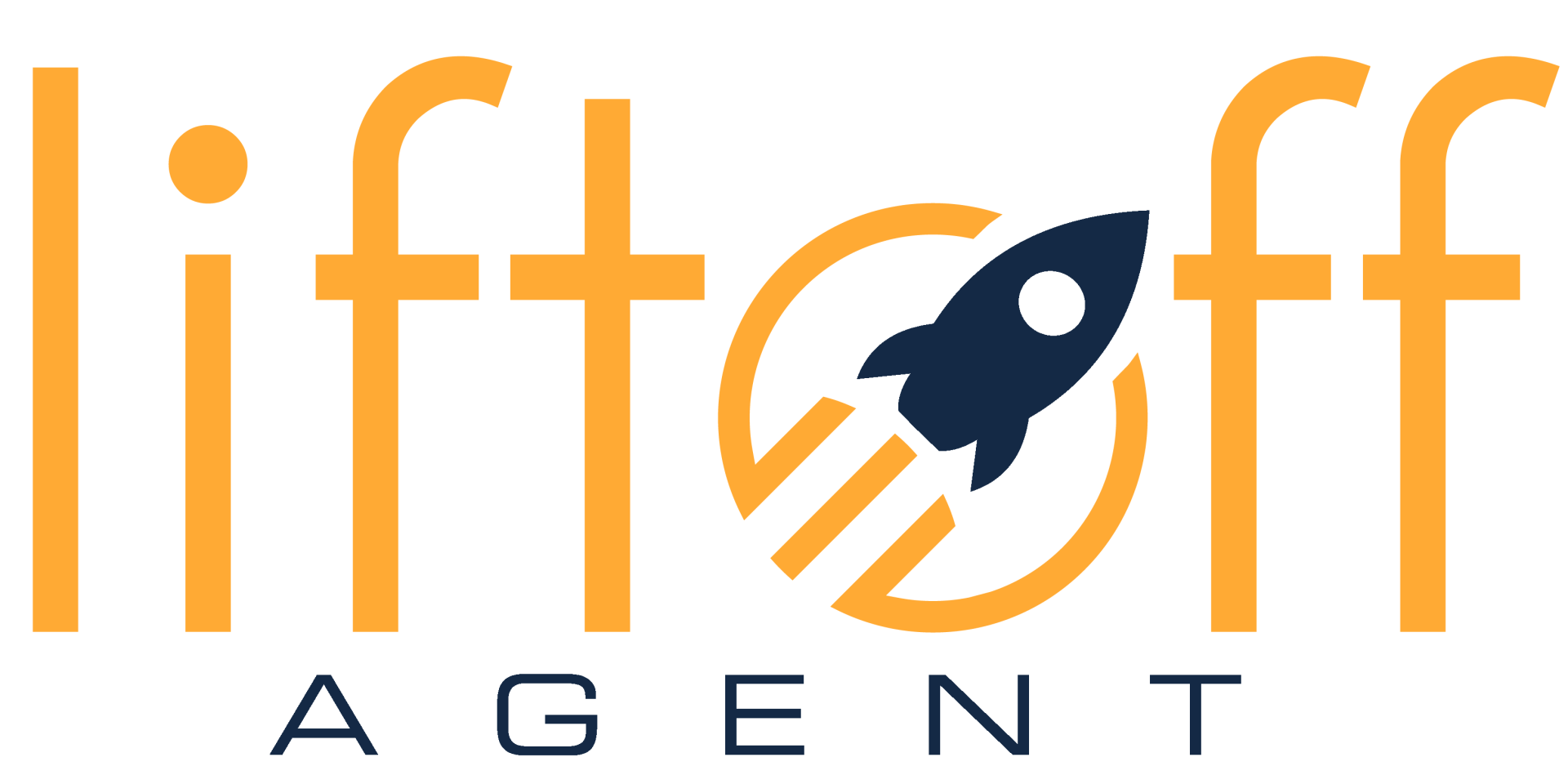Why Shiny Object Syndrome is Keeping Real Estate Agents Broke
If you are tired of chasing every new tool or subscribing to another service that promises leads but delivers little, this is for you. I will walk you through a focused real estate marketing strategy that replaces scattered spending with one predictable system. This approach saves time, consolidates costs, and builds know, like, and trust with potential clients while you sleep. Read on for a step-by-step guide, real-world examples, and practical next steps you can implement today.
Table of Contents
- The “Shiny Object Syndrome” in Real Estate
- The One Thing That Can 10X Your Business
- What the Top 10% of Agents Do Differently
- The Strategy: Build “Know, Like, Trust” in Your Sleep
- Content That Works: Buyer, Seller & Local Market Videos
- Example #1: Living in Dallas Texas Team (Levi & Travis)
- Example #2: Sunshine State Company (Adam Hancock)
- Can You Film Videos to Save Time & Educate Clients?
- How Liftoff Agent Consolidates Tools for Agents
- FAQs About The “Shiny Object Syndrome” in Real Estate
The “Shiny Object Syndrome” in Real Estate
Shiny object syndrome is real. You go to an expo, you see a new CRM, a flashy website, a new mail campaign platform, and you want to try everything. The problem is that multiple tools rarely stack into results without a system. If you have a pile of monthly charges on your bank statement and a P and L that shows lots of line items with little return, you are not alone.
First exercise: pull your bank and credit card statements for the past 12 months and list every vendor and platform you paid. Next to each vendor, write down the measurable results: transactions closed, qualified leads, or revenue attributable to that service. If you cannot reasonably quantify ROI, that line item becomes a candidate for elimination or consolidation when building your real estate marketing strategy.

The One Thing That Can 10X Your Business
There is one repeatable thing the top 10 percent of agents do differently: they create content and systems that generate know, like, and trust automatically. That single focus — using consistent, high-value content to answer buyer, seller, and local-market questions — can be the difference between sporadic leads and consistent listings and sales.
Top producers do not chase every tool. They funnel their marketing energy into a unified system that uses video content, a centralized website, and automated follow-up to guide prospects down a predictable path: discover, trust, engage, and convert.
What the Top 10% of Agents Do Differently
The top 10 percent generate roughly 90 percent of market volume. Their advantage is not secret sauce, it is discipline. They:
- Pick a niche market area and dominate it
- Produce content that answers specific questions their future clients are asking
- Consolidate vendors so they have a single operating rhythm
- Automate repetitive tasks so their calendar fills without constant outreach
When you commit to one strong real estate marketing strategy instead of many half-executed tactics, results compound quickly. One agent I work with closed 386 transactions in 12 months. Another group did half a billion in sales in five years. The common denominator is not expensive toys; it is repeatable systems powered by content.
The Strategy: Build “Know, Like, Trust” in Your Sleep
Here is the operational definition of a real estate marketing strategy that actually scales: create content that answers the questions buyers and sellers type into Google and YouTube, host it on a centralized website, and connect it to an automated system that tells the prospect exactly what to do next.
That system should include:
- Video content organized by buyer, seller, and neighborhood topics
- Landing pages and neighborhood guides that capture contact information
- Automated email and calendar workflows that move warm leads into appointments
- Analytics that let you quantify which pieces of content drive transactions
When all of these pieces work together, your content builds know, like, and trust while you sleep — prospects discover you, watch a few videos, and feel like they already know you before the conversation even begins.
Content That Works: Buyer, Seller & Local Market Videos
Not all content is created equal. To maximize your real estate marketing strategy, produce videos that solve specific pain points. Break them into three focused buckets:
- Buyer content: How to make an offer, financing basics, inspection expectations
- Seller content: Staging tips, pricing strategy, timing and closing expectations
- Local market content: Neighborhood tours, school reviews, commute times, and lifestyle highlights
Each video should have a single purpose: answer one question clearly and show viewers the next step. For example: "How long does closing take?" could end with a clear CTA to book a timeline review call via an embedded calendar. That simple step converts passive viewers into booked appointments.
Example #1: Living in Dallas Texas Team (Levi & Travis)
Case study: Levi and Travis focused on "Living in Dallas Texas Team." They produced neighborhood videos, market updates, and buyer/seller guides, and they centralized everything via a website that showcased those videos, maps, and reviews. Their YouTube channel accumulated millions of views and tens of thousands of subscribers. The key was consistency and alignment between the content and the site structure.
What you can copy from their playbook:
- Create a neighborhood content hub on your site
- Embed short, SEO-optimized videos on each hub page
- Include maps, school info, and downloadable guides to capture leads
Example #2: Sunshine State Company (Adam Hancock)
Another example is Adam Hancock, who built Sunshine State Company focused on living in Florida. He paired location videos with in-depth guides and a clear buyer/seller journey. The result: predictable lead flow and large transaction volumes. Adam used maps, video blogs, and social proof to reduce friction in the sales process.
Can You Film Videos to Save Time & Educate Clients?
Yes. If you can answer questions on camera, you can save hours per week answering the same query multiple times. Recording a 3-minute video that answers a common question replaces several back-and-forth calls and text threads. Film videos for your buyer process, seller process, and for each neighborhood you serve.
Tips for filming fast, effective videos:
- Write a 30-second outline for each video
- Keep videos between 2 and 6 minutes
- Always end with a clear next step or calendar link
- Batch film: shoot several videos in one session
How Liftoff Agent Consolidates Tools for Agents
Consolidation is the antidote to shiny object syndrome. Instead of paying five vendors that do pieces of the work, move to a single solution that handles your website, video hosting, social scheduling, and ad management. One point of contact reduces complexity, lowers overall costs, and ensures that your real estate marketing strategy is consistently executed.
Benefits of consolidation:
- Lower monthly overhead
- Unified reporting and analytics
- Faster content-to-lead workflows
- A single operating rhythm you can train your team on
10 Game-Changing Tools for Your Website
To make your website a 24/7 selling machine, focus on tools that support content discovery, lead capture, and automation. Each one of these tools needs to feed into the same system so you can measure which content pieces are driving real transactions. This is the heart of a working real estate marketing strategy. Download the 10 Game-Changing Tools | Real Estate Website here
Beginner’s Guide to YouTube for Real Estate Agents
YouTube is the single best platform for long-term, discoverable content. Use it to sell yourself, your process, and your area. Start with a content plan that includes at least 20 to 30 foundational videos covering buyer, seller, and neighborhood topics. Download the Winning Strategies To Maximize your YouTube Channel Guide here
Beginner steps:
- Make a content calendar with 23 starter video ideas
- Optimize titles and descriptions with local keywords
- Embed videos on relevant pages on your site
- Use short clips on social to drive viewers to the full video and your site
How to Leverage Technology to Automate Your Business
Automation is not about removing the human touch; it is about removing repetitive manual work so you can spend time where your attention matters. Build standard operating procedures around how leads are handled, schedule automated nurture sequences, and use triggers to move leads from curiosity to appointment.
Automation framework:
- Trigger: visitor watches a neighborhood video and clicks download
- Capture: the site captures email and phone
- Nurture: automated email provides more neighborhood info and a CTA
- Convert: calendar invites are offered after two engagement signals
- Measure: track which video led to the appointment and transaction
Download Your FREE Guide on How to Use Technology to Automate Your Real Estate Business from A to Z
FAQs About The “Shiny Object Syndrome” in Real Estate
How do I know which marketing tools to keep and which to cancel?
Start with a 12-month audit of every vendor on your bank and credit card statements. For each tool, list measurable outcomes like leads, booked appointments, or closed deals that you can reasonably attribute. If you cannot quantify ROI, pause or cancel and reallocate that budget to a consolidated real estate marketing strategy that focuses on content and automation.
What type of videos should I film first?
Begin with high-value, frequently asked questions from buyers and sellers. Film short explainers for the buying process, the selling process, and 3 to 5 neighborhood tours. Keep each video focused on a single question and end with a clear next step: download a guide, book a call, or view a neighborhood map.
Can I handle all of this alone or do I need a team?
You can start alone by batching videos and using simple automation tools. As you scale, hire or outsource video editing and ad management, but keep strategy and content direction in-house. The goal is one point of contact and a single system, even if multiple people execute parts of it.
How long before I see results from this real estate marketing strategy?
Expect to see initial engagement metrics within weeks: views, form fills, and calendar bookings. Transactional results typically take months because content builds trust over time. Agents who consistently publish and optimize often see compounding results within 3 to 12 months.
How many vendors should I consolidate into one platform?
Aim to consolidate the website, video hosting, social scheduling, and basic ad management into a single solution. CRM and complex ad services can remain separate only if they integrate well. The point is to reduce friction and cost while maintaining reliable analytics and workflows.
What metrics should I track to measure ROI?
Track views to leads, leads to appointments, and appointments to closed transactions. Also measure cost per lead and cost per closed transaction for ad campaigns. On the content side, measure which videos drove the highest conversion to booking and the average time from first contact to appointment.

We specialize in working with real estate agents and teams to build local authority. We do this through creating and managing your brand, website, video and social presence.
We'd love to chat and show you how you can dominate your local market and avoid wasted marketing dollars.
Subscribe to Newsletter